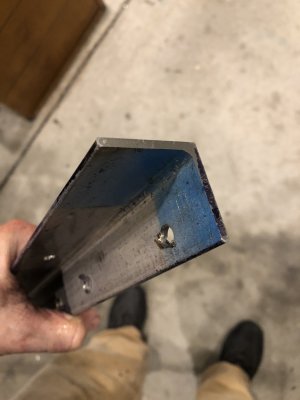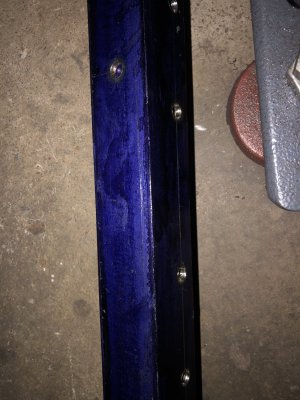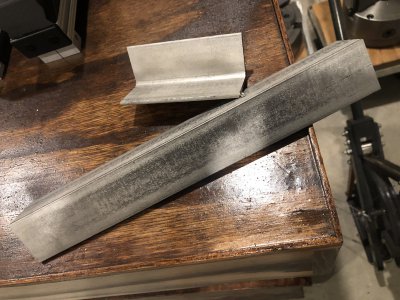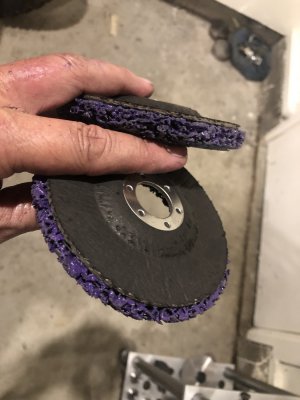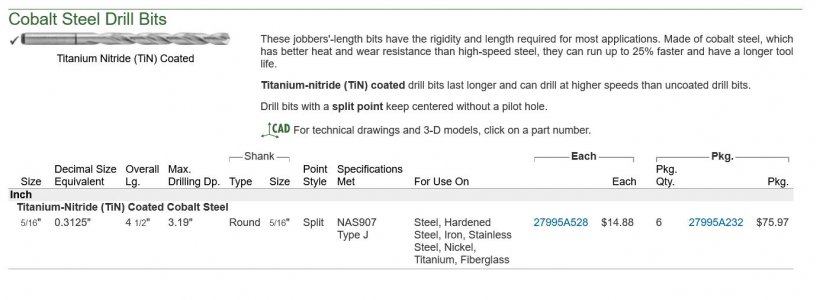- Joined
- Sep 8, 2019
- Messages
- 4,392
I have well over 100 holes yet to drill in .125” 304 stainless. I am using 5/16” solid carbide drills. Machine is a 3HP, 3 phase knee mill. I am liberally using dark thread cutting oil on both the work & drill. I peck and I do not get aggressive.
What worked best for me was 1000 RPM with a hand feed, using the quill. The only problem is that the drills aren’t lasting as long as I would like.
I give the drill *a lot* of time to cool. One has to do this in this case; I was really surprised how hot the drill was getting.
I know that stainless work hardens.
These are brackets to connect hardwood fence slats to hardwood 4” X 4” posts in the ground.
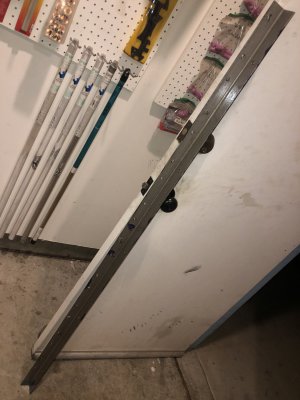
What worked best for me was 1000 RPM with a hand feed, using the quill. The only problem is that the drills aren’t lasting as long as I would like.
I give the drill *a lot* of time to cool. One has to do this in this case; I was really surprised how hot the drill was getting.
I know that stainless work hardens.
These are brackets to connect hardwood fence slats to hardwood 4” X 4” posts in the ground.

Last edited:


